Key Takeaways
- Learn how to identify your organization’s specific AI needs and map out a strategic hiring roadmap.
- Discover the key roles required in an AI team and how to structure and scale them effectively for long-term growth.
- Avoid common pitfalls by fostering a strong AI culture, aligning cross-functional collaboration, and ensuring ethical governance.
In the race toward digital transformation, few technologies have made as profound an impact as artificial intelligence (AI). From predictive analytics and generative models to intelligent automation and AI-driven customer experiences, businesses across every sector are investing heavily in AI to drive innovation, efficiency, and growth. But while the demand for AI capabilities is surging, a critical barrier remains: the acute shortage of skilled AI professionals and the complexity of assembling a high-performing, multidisciplinary AI team.

For startups, building an AI team from the ground up can seem daunting. With limited resources, time constraints, and fierce competition for talent, founders and technical leaders must make strategic decisions about whom to hire, when to hire, and how to structure their teams for success. On the other hand, large enterprises face a different set of challenges: integrating AI into existing systems, scaling teams across global operations, and aligning AI initiatives with business objectives while maintaining compliance and security standards.
Whether you’re a lean startup launching your first AI-powered MVP or a mature organization seeking to scale AI initiatives enterprise-wide, the foundation of your success lies in the team you build. Creating an AI dream team is not just about hiring data scientists or machine learning engineers; it’s about designing a cohesive, agile, and goal-oriented unit that can move ideas from concept to production—and continuously evolve alongside the rapidly shifting AI landscape.
The ideal AI team brings together a mix of technical expertise, strategic thinking, and cross-functional collaboration. This includes not only data scientists and AI/ML engineers, but also data engineers, product managers, domain experts, AI ethicists, MLOps engineers, and user experience designers—each playing a vital role in the lifecycle of AI development and deployment. However, identifying the right talent mix, creating a hiring roadmap, setting realistic expectations, and fostering a productive AI culture are easier said than done.
In this comprehensive, step-by-step guide, we will walk you through everything you need to know to build your AI dream team in 2025—from assessing your business needs and defining critical roles to sourcing, evaluating, and retaining top-tier AI talent. We’ll explore best practices for startups and enterprises alike, offering tailored strategies to suit your scale, industry, and AI maturity level. You’ll also learn how to avoid common pitfalls, leverage modern recruitment tools, and future-proof your team as AI technologies evolve.
With global AI investment expected to exceed $500 billion in the coming years, organizations that succeed in building strong AI teams today will gain a decisive competitive advantage tomorrow. This guide is your blueprint for assembling the right people, creating a strong foundation, and turning your AI vision into real-world results.
Let’s dive in and start building your AI dream team—one strategic step at a time.
Before we venture further into this article, we would like to share who we are and what we do.
About 9cv9
9cv9 is a business tech startup based in Singapore and Asia, with a strong presence all over the world.
With over nine years of startup and business experience, and being highly involved in connecting with thousands of companies and startups, the 9cv9 team has listed some important learning points in this overview of Building Your AI Dream Team: A Step-by-Step Guide for Startups & Enterprises.
If your company needs recruitment and headhunting services to hire top-quality employees, you can use 9cv9 headhunting and recruitment services to hire top talents and candidates. Find out more here, or send over an email to [email protected].
Or just post 1 free job posting here at 9cv9 Hiring Portal in under 10 minutes.
Building Your AI Dream Team: A Step-by-Step Guide for Startups & Enterprises
- Understanding Your AI Needs
- Key Roles in an AI Dream Team
- Mapping Out Your Hiring Roadmap
- Finding and Attracting Top AI Talent
- Evaluating AI Candidates Effectively
- Structuring and Managing the AI Team
- Building a Strong AI Culture
- Scaling the AI Team for Long-Term Success
- Common Pitfalls to Avoid
1. Understanding Your AI Needs
A successful AI initiative begins not with technology, but with a clear understanding of your business objectives and how AI can be applied to achieve them. This section breaks down how to assess your AI readiness, identify viable use cases, and choose the right AI technologies tailored to your goals.
Assessing Your Business Objectives and Challenges
Before investing in AI, you must connect its application to strategic business goals.
Key Questions to Ask:
- What problems are we trying to solve?
- Are these problems repetitive, data-driven, and scalable?
- How will solving them impact revenue, cost, customer experience, or efficiency?
Examples of Goal-Oriented AI Applications:
| Business Goal | AI Application Example | Industry |
|---|---|---|
| Increase customer satisfaction | Chatbots for 24/7 support | E-commerce, Banking |
| Optimize operations | Predictive maintenance for equipment | Manufacturing |
| Improve forecasting accuracy | Sales trend prediction models | Retail |
| Reduce churn | Customer churn prediction using machine learning | SaaS, Telecom |
| Boost personalization | Recommendation engines | Streaming, Retail |
Identifying the Right AI Use Cases
To ensure ROI, prioritize use cases based on feasibility and impact.
How to Prioritize AI Use Cases:
- Impact: Will solving this create measurable value?
- Data availability: Do you have access to the right datasets?
- Complexity: Is the problem too broad or ill-defined?
- Scalability: Can the solution be reused or adapted across the organization?
Use Case Prioritization Matrix:
| Impact | Feasibility | Recommended Action |
|---|---|---|
| High | High | Prioritize immediately |
| High | Low | Invest in data or tools first |
| Low | High | Consider if cost is minimal |
| Low | Low | Deprioritize or discard |
Evaluating Your Current Data Infrastructure
AI is only as good as the data behind it. Conduct a data audit before building anything.
Checklist for Data Readiness:
- Do you have structured and unstructured data relevant to your goals?
- Is the data stored in centralized, accessible systems (e.g., cloud, data lake)?
- How clean and labeled is your data?
- Do you have real-time or batch data availability?
Example Data Requirements for Common AI Projects:
| AI Use Case | Required Data Types | Frequency Needed |
|---|---|---|
| Fraud detection | Transaction history, user behavior | Real-time |
| Demand forecasting | Sales data, seasonality, promotions | Daily/weekly |
| Image classification | Labeled image datasets | Historical |
| Sentiment analysis | Customer reviews, support tickets | Continuous collection |
Understanding AI Domains and Matching with Business Needs
Not all AI is the same. Understanding the right type of AI for your goal prevents misalignment.
Common AI Domains:
- Machine Learning (ML): Algorithms that learn patterns from data.
- Use Case: Predicting product return likelihood
- Natural Language Processing (NLP): Understanding and generating human language.
- Use Case: Automating customer support through chatbots
- Computer Vision: Processing visual data like images or videos.
- Use Case: Monitoring production lines for defects
- Robotic Process Automation (RPA): Automating rule-based, repetitive tasks.
- Use Case: Invoice processing, data entry
- Generative AI: Creating content or data using models like GPT or DALL·E.
- Use Case: Drafting marketing copy or generating product designs
Startups vs Enterprises: Tailoring AI Needs to Business Size
For Startups:
- Focus on one high-impact use case
- Use open-source or cloud-based AI tools
- Hire hybrid AI generalists
- Emphasize speed over scalability
For Enterprises:
- Align AI with enterprise-wide digital transformation
- Invest in data lakes, governance, and MLOps infrastructure
- Hire specialists in AI/ML, data engineering, ethics, and compliance
- Focus on scalability, governance, and integration with legacy systems
Determining Build vs Buy Strategy
Choose whether to build AI solutions in-house, buy existing tools, or partner with vendors.
Considerations for Build:
- Customization is critical
- You have strong in-house technical teams
- Long-term AI investment is strategic
Considerations for Buy:
- You need quick deployment
- Use case is common (e.g., customer service chatbots)
- Internal resources are limited
| Criteria | Build In-House | Buy/Use SaaS AI |
|---|---|---|
| Time to Deploy | Longer | Shorter |
| Cost (initial) | Higher | Lower |
| Customization | High | Limited |
| Maintenance Responsibility | Internal | Vendor-managed |
| Control Over IP/Data | Full | Shared/Third-party risk |
Conducting an AI Feasibility Assessment
Before launching your AI project, perform a structured feasibility assessment.
Feasibility Factors:
- Technical feasibility: Do we have the infrastructure and tools?
- Operational feasibility: Can our team support AI implementation?
- Financial feasibility: Do we have the budget for development and scaling?
- Ethical/legal feasibility: Are there compliance or ethical risks?
Conclusion
Understanding your AI needs is not a one-time decision—it’s an evolving process that demands deep alignment between technology, business goals, data capabilities, and organizational readiness. Start by mapping objectives, prioritize realistic and impactful use cases, audit your data infrastructure, and choose the right AI technologies that fit your scale. With a clear understanding of your AI foundation, your organization can avoid costly missteps and lay the groundwork for scalable, effective AI transformation.
2. Key Roles in an AI Dream Team
Building a high-impact AI team requires more than just hiring data scientists. A successful AI initiative involves a blend of technical, strategic, and operational roles that collaborate across the data pipeline—from data collection to model deployment and business integration. This section outlines the essential roles in an AI dream team, including their core responsibilities, required skills, and how they interact.
AI/ML Engineer
Role Overview:
- Designs, develops, and optimizes machine learning models for production environments.
- Works closely with data scientists and software engineers to integrate models into applications.
Key Responsibilities:
- Model development and optimization
- Feature engineering and selection
- Deploying models to cloud or edge environments
- Version control and retraining pipelines
Core Skills:
- Python, TensorFlow, PyTorch, Scikit-learn
- Model tuning and evaluation
- REST APIs and model serving frameworks
- Cloud platforms (AWS, GCP, Azure)
Example Use Case:
- Building a real-time recommendation engine for an e-commerce platform
Data Scientist
Role Overview:
- Extracts insights and builds predictive models based on statistical and machine learning techniques.
Key Responsibilities:
- Data analysis and hypothesis testing
- Model experimentation and validation
- Storytelling through data visualization
- Communicating results to stakeholders
Core Skills:
- Python, R, SQL
- Machine learning algorithms (classification, regression, clustering)
- Data wrangling and exploratory analysis
- Jupyter, Power BI, Tableau
Example Use Case:
- Predicting customer churn for a SaaS platform using historical behavior data
Data Engineer
Role Overview:
- Manages data pipelines, storage solutions, and infrastructure needed for AI workflows.
Key Responsibilities:
- Building and maintaining ETL/ELT pipelines
- Integrating data from various sources
- Ensuring data quality, consistency, and availability
- Managing big data platforms
Core Skills:
- SQL, Spark, Hadoop, Kafka
- Data warehousing (Snowflake, BigQuery, Redshift)
- Cloud infrastructure (Databricks, AWS Glue, Airflow)
- APIs and real-time data streaming
Example Use Case:
- Creating a unified data pipeline that feeds data into an AI-powered fraud detection system
AI Product Manager
Role Overview:
- Translates business problems into AI solutions and manages the end-to-end product lifecycle.
Key Responsibilities:
- Defining AI product vision and roadmap
- Managing cross-functional teams (AI, design, engineering)
- Aligning AI outputs with business outcomes
- Ensuring ethical and compliant AI development
Core Skills:
- Product management frameworks (Agile, SCRUM)
- Stakeholder communication
- Basic understanding of AI/ML concepts
- Prioritization and decision-making
Example Use Case:
- Leading the development of a voice-enabled virtual assistant in a banking app
MLOps Engineer
Role Overview:
- Ensures continuous integration and delivery (CI/CD) of machine learning models in production environments.
Key Responsibilities:
- Automating ML pipelines
- Monitoring model performance and drift
- Implementing model rollback strategies
- Managing infrastructure for AI deployment
Core Skills:
- MLFlow, Kubeflow, Docker, Kubernetes
- GitOps, CI/CD tools (Jenkins, GitHub Actions)
- Model monitoring and alerting
- Cloud-native DevOps (Terraform, Helm)
Example Use Case:
- Creating a deployment and monitoring system for an AI model predicting supply chain disruptions
AI Research Scientist
Role Overview:
- Focuses on developing novel AI algorithms and advancing the state of the art in areas like NLP, vision, and reinforcement learning.
Key Responsibilities:
- Publishing AI research and white papers
- Prototyping experimental models
- Exploring deep learning and foundational models
- Collaborating with academia and open-source communities
Core Skills:
- Advanced knowledge of AI theory (deep learning, transformers, RL)
- Research methodologies and scientific writing
- Frameworks like Hugging Face, PyTorch, JAX
- Mathematical foundations (linear algebra, calculus, statistics)
Example Use Case:
- Developing a domain-specific large language model for legal document summarization
UX Designer for AI Products
Role Overview:
- Designs intuitive and user-friendly interfaces for AI-driven applications.
Key Responsibilities:
- Mapping AI workflows into usable interfaces
- Conducting user research and usability testing
- Designing AI explanations and feedback systems
- Ensuring ethical and inclusive AI interactions
Core Skills:
- Figma, Adobe XD, Sketch
- User testing and personas
- Human-centered AI design
- Information architecture and interaction design
Example Use Case:
- Designing a dashboard that explains AI predictions in a medical diagnosis app
AI Ethics & Compliance Officer
Role Overview:
- Ensures that AI systems adhere to legal, ethical, and regulatory standards.
Key Responsibilities:
- Defining AI governance frameworks
- Monitoring for bias, fairness, and transparency
- Creating audit trails for AI decisions
- Aligning with GDPR, HIPAA, and AI regulations
Core Skills:
- Legal knowledge of AI/data regulation
- Ethical risk assessment
- Model explainability techniques (LIME, SHAP)
- AI policy development
Example Use Case:
- Conducting a fairness audit of an AI-driven loan approval system
Role Interdependency Chart
| Role | Collaborates With | Primary Objective |
|---|---|---|
| AI/ML Engineer | Data Scientist, MLOps Engineer | Build and deploy robust models |
| Data Scientist | Data Engineer, Product Manager | Extract insights and test models |
| Data Engineer | AI/ML Engineer, Data Scientist | Provide clean, scalable data pipelines |
| Product Manager | All roles | Ensure AI aligns with business goals |
| MLOps Engineer | AI/ML Engineer, DevOps Team | Operationalize ML workflows |
| Research Scientist | AI/ML Engineer, Academia | Innovate new AI techniques |
| UX Designer | Product Manager, End Users | Create intuitive AI-driven interfaces |
| Ethics Officer | Product Manager, Data Science Team | Enforce responsible AI practices |
Example AI Team Composition by Company Size
| Company Type | Team Size | Key Roles Included |
|---|---|---|
| Early-Stage Startup | 3–5 | Data Scientist, ML Engineer, Product Manager |
| Mid-Size Scaleup | 6–12 | + Data Engineer, MLOps Engineer, UX Designer |
| Enterprise AI Lab | 15+ | + Research Scientists, Ethics Officer, Multiple PMs & Teams |
Conclusion
Each role in an AI dream team contributes to the larger goal of delivering measurable business value through intelligent systems. While startups may need hybrid roles to conserve resources, enterprises should invest in deep specialization to ensure scale, reliability, and compliance. Understanding the function, scope, and interdependencies of these roles is the cornerstone of building a high-performance AI team in 2025 and beyond.
3. Mapping Out Your Hiring Roadmap
A well-defined hiring roadmap is essential for building an AI dream team that is scalable, cost-efficient, and aligned with your organization’s growth stage and strategic goals. Whether you’re launching a startup MVP or scaling enterprise-wide AI capabilities, your hiring strategy must be deliberate, phased, and tailored to evolving priorities. This section outlines how to map your AI hiring journey step by step.
Defining Your AI Team Vision and Hiring Goals
Before hiring, clarify your strategic intent:
- Align team-building with AI project timelines and business milestones.
- Prioritize roles based on immediate needs vs long-term scaling.
- Set KPIs for talent acquisition (e.g., time-to-hire, technical fit, retention).
Questions to Define Your Hiring Vision:
- What is the core problem the AI team must solve in the next 6–12 months?
- Which roles are mission-critical to achieve this?
- What level of experience or seniority is required?
- How many hires can your budget support?
Example:
| Business Objective | First AI Hire | Reason |
|---|---|---|
| Launching predictive analytics | Data Scientist | Build and validate initial ML models |
| Building AI MVP | ML Engineer | Develop deployable AI functionalities |
| Cleaning and integrating data | Data Engineer | Build ETL pipelines |
Stage-Wise Hiring Strategy for Startups and Enterprises
AI team growth should mirror your product maturity and data readiness.
Startups:
- Focus on generalists who can wear multiple hats.
- Build lean teams and use consultants or freelancers when needed.
- Prioritize adaptability over deep specialization.
Enterprises:
- Emphasize specialization and role depth.
- Build domain-specific teams per AI use case.
- Establish governance and support layers early on.
Hiring Roadmap by Growth Stage:
| Stage | Priority Roles | Objectives |
|---|---|---|
| Stage 1: Ideation | Data Scientist, Product Manager | Define use case, test initial concepts |
| Stage 2: MVP Build | ML Engineer, Data Engineer | Develop working models and data pipelines |
| Stage 3: Pilot Test | MLOps Engineer, UX Designer | Operationalize and refine the solution |
| Stage 4: Scaling | Research Scientist, Compliance Officer | Expand use cases, ensure governance |
| Stage 5: Optimization | AI Architect, AI Strategist | Optimize performance, align with strategy |
Budget Planning and Cost Optimization
Understanding the cost implications of each hire ensures efficient resource allocation.
Average Global Salary Benchmarks in 2025 (USD):
| Role | Startup Salary Range | Enterprise Salary Range |
|---|---|---|
| Data Scientist | $85,000 – $125,000 | $110,000 – $160,000 |
| ML Engineer | $95,000 – $140,000 | $120,000 – $180,000 |
| Data Engineer | $90,000 – $130,000 | $115,000 – $170,000 |
| MLOps Engineer | $100,000 – $150,000 | $130,000 – $190,000 |
| AI Product Manager | $110,000 – $160,000 | $140,000 – $200,000 |
| AI Research Scientist | $120,000 – $180,000 | $160,000 – $230,000 |
Cost-Saving Tips:
- Hire remote or nearshore talent for non-core roles.
- Use AI hiring platforms to automate candidate screening.
- Offer equity or flexible benefits for early-stage talent attraction.
In-House vs Outsourcing vs Hybrid AI Teams
Each hiring model comes with trade-offs in speed, cost, and control.
When to Build In-House:
- Proprietary data or technology is central to competitive advantage.
- You plan to build a long-term AI infrastructure.
- Security and compliance are critical.
When to Outsource:
- Need rapid prototyping or proof of concept.
- Internal AI skills are lacking.
- Use cases are standardized (e.g., chatbot, recommendation systems).
When to Use a Hybrid Model:
- Building an internal core team supported by AI consultants or freelancers.
- Phased hiring plan with outsourced support during early stages.
Comparison Table:
| Criteria | In-House | Outsourcing | Hybrid Model |
|---|---|---|---|
| Speed to Build | Slower | Faster | Medium |
| Cost Efficiency (Short Term) | Lower | Higher | Balanced |
| Customization | High | Limited | High for core, low for support |
| Long-Term Scalability | High | Limited | High |
| Data Security | Full Control | Risk Involved | Moderate Control |
Building a Candidate Pipeline
Avoid reactive hiring by building a long-term candidate pipeline.
Best Practices:
- Build partnerships with AI communities, universities, and bootcamps.
- Contribute to open-source AI projects to attract talent.
- Host AI challenges or hackathons.
- Use AI recruitment platforms (e.g., Hired, Turing, Eightfold).
Channels to Source Talent:
| Channel | Strengths |
|---|---|
| Large talent pool, professional filters | |
| GitHub | Source by project contributions |
| Stack Overflow | Evaluate technical community involvement |
| AngelList, Wellfound | Best for startup-focused talent |
| Kaggle | Great for finding top ML practitioners |
| Internal Referrals | High-quality and culturally aligned candidates |
Setting a Realistic Hiring Timeline
Hiring AI talent takes time, especially for senior or specialized roles.
Typical Hiring Timelines in 2025:
| Role | Avg. Time to Hire (Days) |
|---|---|
| Data Scientist | 30 – 45 |
| ML Engineer | 45 – 60 |
| MLOps Engineer | 45 – 70 |
| Product Manager | 30 – 50 |
| Research Scientist | 60 – 90 |
Speed Up Hiring By:
- Pre-screening with AI recruitment tools
- Streamlining interview processes
- Preparing realistic and well-defined job descriptions
- Clearly communicating mission and impact
Measuring and Optimizing Hiring Performance
To build sustainably, regularly evaluate your hiring performance.
Key Metrics to Track:
- Time-to-hire per role
- Cost-per-hire
- Candidate-to-offer conversion rate
- Retention rate after 6 and 12 months
- Team diversity metrics
Example AI Hiring Dashboard:
| Metric | Target | Current | Trend |
|---|---|---|---|
| Time-to-hire (Data Engineer) | 45 days | 62 days | Improving |
| Offer Acceptance Rate | >80% | 68% | Declining |
| Technical Fit (Coding Score) | >75% avg | 82% | Stable |
| Female Representation | ≥30% | 24% | Increasing |
Conclusion
Mapping out your AI hiring roadmap is a foundational step in building a capable, agile, and goal-oriented AI team. By aligning roles with business milestones, budgeting effectively, choosing the right hiring model, and proactively building your pipeline, you can scale talent acquisition strategically. Whether you’re a startup taking your first step or an enterprise optimizing at scale, a well-planned hiring roadmap ensures your AI team delivers real business value—on time and within budget.
4. Finding and Attracting Top AI Talent
In today’s hyper-competitive landscape, finding and attracting top-tier AI talent is one of the most critical—and challenging—tasks for startups and enterprises alike. The global demand for AI professionals has far outpaced supply, with companies vying for skilled candidates who possess both technical depth and business acumen. To stand out, companies must develop a strategic, multi-channel approach to AI talent acquisition that emphasizes brand positioning, candidate experience, and access to specialized recruitment partners.
This section explores proven methods and platforms for sourcing AI professionals, how to craft compelling value propositions, and how to leverage global and regional resources like the 9cv9 Recruitment Agency and the 9cv9 Job Portal.
Understanding the AI Talent Landscape in 2025
Global AI Talent Trends:
- The global AI workforce is projected to exceed 12 million by the end of 2025.
- There is a rising demand for niche roles such as AI Ethicists, MLOps Engineers, and AI Security Specialists.
- Remote and hybrid roles are now widely accepted, expanding access to global talent pools.
Key Challenges in AI Talent Acquisition:
- Shortage of experienced AI professionals
- High salary expectations in developed markets
- Competition from tech giants with deep resources
- Difficulty assessing real-world AI skills
Top Hiring Locations in 2025:
| Region | AI Talent Availability | Hiring Competition | Average Salary (USD) |
|---|---|---|---|
| North America | High | Very High | $120,000 – $200,000 |
| Europe | Moderate | High | $90,000 – $160,000 |
| Southeast Asia | Growing Rapidly | Moderate | $40,000 – $90,000 |
| India | High | Moderate | $30,000 – $75,000 |
Leveraging Recruitment Platforms and Agencies
To efficiently identify and connect with qualified AI candidates, you need access to trusted recruitment networks.
Top Channels to Source AI Talent:
| Platform/Agency | Best For | Strengths |
|---|---|---|
| 9cv9 Job Portal | Southeast Asia, remote tech talent | AI-specialized listings and filters |
| 9cv9 Recruitment Agency | Startup and enterprise AI hiring | End-to-end recruitment, candidate vetting |
| Mid to senior AI professionals | Powerful filters, messaging capabilities | |
| GitHub | AI developers and contributors | View open-source activity and reputation |
| Kaggle | ML/data science competition talent | Leaderboards highlight practical skill |
| Stack Overflow Jobs | Developer-focused hiring | Insight into coding strengths |
| AngelList/Wellfound | Startup-focused AI generalists | Ideal for early-stage startup recruitment |
Why Use 9cv9 Recruitment Agency:
- Specializes in tech and AI recruitment across Asia-Pacific
- Offers AI-specific candidate screening and assessments
- Deep understanding of startup and enterprise hiring dynamics
- Access to a large candidate database in emerging markets like Vietnam, Indonesia, and the Philippines
Why List on 9cv9 Job Portal:
- Reaches a growing AI and tech talent community in Southeast Asia
- Affordable listing packages for startups and SMEs
- SEO-optimized job posts increase visibility among active AI job seekers
- Allows filtering by AI skill sets such as Python, NLP, TensorFlow, etc.
Crafting High-Converting AI Job Descriptions
To attract elite AI professionals, your job listings must go beyond generic responsibilities.
Best Practices:
- Use clear job titles (e.g., “Senior NLP Engineer”, “MLOps Architect”)
- Highlight the AI tech stack (e.g., PyTorch, Hugging Face, Airflow)
- Explain the business impact of the AI work
- Mention opportunities for research, publication, or innovation
- Include salary range and perks (e.g., remote work, GPU credits, mentorship programs)
Example of a Compelling AI Job Snippet (Startup Role):
We're seeking a Machine Learning Engineer to join our AI team tackling real-time fraud detection using deep learning. You'll work with cutting-edge tools (PyTorch, DVC, AWS SageMaker) and contribute to live systems impacting millions of users. Flexible work, equity options, and growth into an AI leadership role.
Building a Magnetic Employer Brand for AI Talent
Your employer brand is often the first filter for top-tier AI candidates.
Branding Tactics That Resonate:
- Showcase your AI projects in public forums (e.g., GitHub, Medium)
- Offer mentorship opportunities and R&D budgets
- Highlight team diversity and inclusive practices
- Encourage team members to speak at AI conferences
- Create career pages tailored for AI roles
What AI Candidates Look For in 2025:
- Clear mission and impact of their work
- Access to modern tools, datasets, and infrastructure
- Remote-first flexibility and work-life balance
- Investment in professional development
- Recognition and publishing opportunities
Using Inbound and Outbound Talent Strategies
Inbound (Attracting Talent):
- Optimize job listings with keywords like “AI”, “machine learning”, “NLP”, “computer vision”, “Generative AI”
- Post across AI-focused platforms and academic job boards
- Collaborate with AI influencers and communities on LinkedIn and Twitter
Outbound (Proactively Reaching Talent):
- Search GitHub repositories for active AI contributors
- Engage Kaggle Grandmasters or leaderboard participants
- Use the 9cv9 Recruitment Agency to headhunt high-potential passive candidates
- Leverage employee referrals with incentives
Example Inbound vs Outbound Channels Table:
| Strategy | Channel | Purpose |
|---|---|---|
| Inbound | 9cv9 Job Portal | Attracts high-intent AI job seekers |
| Inbound | LinkedIn & AI communities | Builds brand visibility |
| Outbound | GitHub contributor search | Source developers working on real code |
| Outbound | 9cv9 Recruitment Agency | Targets hard-to-find candidates quickly |
Attending and Hosting AI-Specific Events
Live and virtual events are great for sourcing high-quality AI professionals.
Event Strategies:
- Sponsor AI hackathons or datathons to discover fresh talent
- Attend industry events like NeurIPS, CVPR, or local AI summits
- Partner with universities for guest lectures or campus hiring
- Host webinars or meetups on practical AI topics to attract engaged professionals
Offering Competitive and Strategic Incentives
Top AI candidates have multiple options—your compensation and career growth must be compelling.
Non-Monetary Attractors:
- Access to large-scale datasets and real-world problems
- Collaboration with PhDs and research experts
- Flexible schedules and remote work options
- Opportunities for patents or publications
AI Compensation and Benefits Benchmark (2025):
| Role | Base Salary (USD) | Bonus/Equity Potential | Popular Perks |
|---|---|---|---|
| Data Scientist | $100,000 | $10,000 – $30,000 | Remote work, conference budget |
| ML Engineer | $120,000 | $15,000 – $40,000 | Cloud credits, wellness budget |
| Research Scientist | $150,000 | $25,000 – $50,000 | Publication support, sabbaticals |
Conclusion
Finding and attracting top AI talent in 2025 requires more than traditional recruitment—it demands a data-driven, multi-channel strategy that combines employer branding, competitive incentives, targeted outreach, and partnerships with trusted platforms like the 9cv9 Job Portal and 9cv9 Recruitment Agency. Whether you’re building your first AI team or scaling globally, tapping into the right talent ecosystems will determine the speed and success of your AI transformation.
5. Evaluating AI Candidates Effectively
Hiring the right AI talent is not just about reviewing resumes—it’s about assessing a candidate’s ability to solve real-world AI problems, work collaboratively with teams, and align with your organization’s goals. In a market flooded with candidates who list Python and machine learning on their CVs, an effective evaluation process helps you separate genuine expertise from surface-level knowledge.
This section provides a comprehensive, SEO-optimised breakdown of how to evaluate AI candidates systematically—covering technical screening, soft skills, business acumen, and culture fit.
Designing a Structured AI Candidate Evaluation Framework
To make informed hiring decisions, use a multi-stage process that evaluates both technical depth and problem-solving ability.
Typical AI Hiring Funnel:
| Stage | Purpose | Tools/Methods Used |
|---|---|---|
| Resume Screening | Eliminate unqualified applicants | ATS, manual filtering, keyword matching |
| Technical Pre-screen | Assess basic AI knowledge and coding | HackerRank, Codility, 9cv9 pre-screening |
| Practical Case Assignment | Evaluate real-world problem solving | Custom project, take-home assignment |
| Technical Interview | Deep-dive into AI methods and reasoning | Live coding, whiteboarding, model review |
| Cultural & Business Fit | Ensure alignment with company values | Behavioral interview, team panel |
| Final Decision & Offer | Select the top candidate | Scoring rubric, consensus meeting |
Resume Screening: Red Flags vs Green Flags in AI Candidates
Green Flags:
- Clear project ownership (e.g., “Led model deployment on AWS using MLFlow”)
- Experience with modern frameworks (e.g., PyTorch, TensorFlow, Hugging Face)
- Publications in conferences (e.g., NeurIPS, ICML)
- Participation in Kaggle or AI hackathons
- Contributions to open-source AI projects
Red Flags:
- Vague descriptions (e.g., “Worked on AI solutions”)
- Outdated tech stack only (e.g., MATLAB, only basic sklearn)
- No quantifiable impact or business outcomes
- Jumping roles every few months without clear growth
Example Resume Evaluation Table:
| Candidate Attribute | Score (1–5) | Notes |
|---|---|---|
| AI/ML Project Ownership | 4 | Built full-stack NLP model for sentiment analysis |
| Business Impact Articulation | 3 | Some metrics shown, not consistent |
| Tools & Frameworks Familiarity | 5 | Proficient in PyTorch, DVC, GCP AI Platform |
| Communication Clarity | 2 | Vague writing, buzzwords without explanation |
Technical Pre-Screen: Core Skills to Test
Evaluate foundational skills required for the AI role through automated assessments or live technical screens.
Essential Skill Areas:
- Python programming: Efficient, clean, testable code
- Data preprocessing: Handling missing data, feature engineering
- Machine learning basics: Understanding of regression, classification, overfitting
- Deep learning fundamentals: Neural networks, CNNs, RNNs (role-dependent)
- Math/statistics: Probability, linear algebra, gradient descent
Example Coding Challenge Topics:
- Write a logistic regression function from scratch
- Build a KNN classifier using NumPy
- Optimize a classification model for F1 score on imbalanced data
Pre-Screen Tools to Use:
- HackerRank or Codility for custom AI tests
- Kaggle competitions for challenge-based evaluation
- 9cv9 Recruitment Platform for pre-screened AI candidate pools
Real-World Case Assignments
Use case-based assignments to assess how candidates approach ambiguous, real-world problems.
Case Study Evaluation Focus:
- Data understanding and cleaning approach
- Model choice rationale
- Feature engineering creativity
- Evaluation metric selection
- Communication of results and insights
Example Assignment Prompt:
“You are given 50,000 customer reviews with labeled sentiment. Build a sentiment analysis model and deploy it using a REST API. Document your approach, model selection, and performance.”
Rubric for Evaluation:
| Category | Criteria | Max Score |
|---|---|---|
| Technical Accuracy | Correct implementation of model and pipelines | 10 |
| Data Handling | Quality of preprocessing and feature selection | 10 |
| Innovation | Unique approaches to problem or optimization | 10 |
| Communication | Clarity and documentation of approach | 10 |
| Business Relevance | Ability to link model to business impact | 10 |
Live Technical Interviews: Key Areas to Probe
Use the technical interview to assess real-time reasoning and adaptability.
Suggested Interview Areas:
- Model evaluation techniques (e.g., AUC, recall, precision tradeoffs)
- Explainability (e.g., SHAP values, LIME)
- Handling imbalanced data
- Deployment knowledge (e.g., Docker, APIs, MLOps basics)
- Use of versioning tools (e.g., DVC, Git)
Sample Questions:
- “How would you improve a model with 95% accuracy but only 60% recall?”
- “What’s your approach to detecting and handling data drift?”
- “How would you explain a model’s prediction to a non-technical stakeholder?”
Interview Scoring Sheet Example:
| Topic | Depth (1–5) | Notes |
|---|---|---|
| Model Evaluation | 5 | Deep understanding of precision-recall |
| Explainability Techniques | 4 | Familiar with SHAP, LIME |
| Communication Clarity | 3 | Could improve simplification for executives |
| Real-Time Coding Ability | 5 | Efficient and modular code |
Behavioral and Cultural Fit Interviews
Great AI engineers must also be team players who can communicate across functions.
Key Traits to Assess:
- Curiosity and continuous learning
- Collaborative mindset
- Resilience under ambiguity
- Ability to accept feedback
- Alignment with company mission
Sample Behavioral Questions:
- “Tell us about a time your AI model didn’t work—what did you do?”
- “How do you prioritize when working on multiple ML experiments?”
- “Describe a conflict with a product manager and how you resolved it.”
Assessing Domain Knowledge and Business Acumen
An AI candidate who understands your domain will build more effective solutions.
Domain Knowledge Examples:
- In eCommerce: Familiarity with recommendation engines, customer segmentation
- In Healthcare: HIPAA compliance, medical imaging models
- In Finance: Fraud detection, risk scoring, regulatory limits
How to Assess:
- Ask domain-specific problem-solving scenarios
- Present candidates with a use case relevant to your industry
- Evaluate how well they tailor AI solutions to business constraints
Final Candidate Evaluation and Comparison
Standardize your final decision using a composite evaluation matrix.
Example Final Decision Matrix:
| Candidate | Technical (50%) | Business Fit (20%) | Cultural Fit (20%) | Innovation (10%) | Total Score |
|---|---|---|---|---|---|
| Candidate A | 45 | 18 | 15 | 9 | 87 |
| Candidate B | 40 | 20 | 17 | 7 | 84 |
| Candidate C | 38 | 15 | 19 | 10 | 82 |
Conclusion
Evaluating AI candidates effectively requires a layered approach—one that tests coding skill, practical application, business thinking, and team fit. With the AI job market more competitive than ever, companies that invest in structured, evidence-based evaluation processes will hire more impactful, innovative talent. By combining technical rigor with human insight, your organization can confidently build an AI dream team that delivers results.
6. Structuring and Managing the AI Team
Once the right AI professionals are hired, the next critical step is structuring and managing your AI team for long-term success. Poorly structured teams can lead to communication silos, project delays, misaligned objectives, and model failures. In contrast, a well-organized and effectively managed AI team drives business innovation, scales AI deployment efficiently, and ensures long-term ROI.
This section provides a detailed, SEO-optimised guide to structuring and managing AI teams—from team models and leadership structures to project workflows and performance management.
Choosing the Right AI Team Structure
The structure of your AI team should align with your company’s size, AI maturity, and strategic goals. There are several proven models to consider:
1. Centralized AI Team
- All AI professionals operate as a core unit
- Best for early-stage or pilot-focused organizations
Pros:
- Centralized control and knowledge sharing
- Easier governance and standardization
- Strong collaboration among AI specialists
Cons:
- Limited domain-specific knowledge
- May slow down cross-functional delivery
2. Decentralized AI Team
- AI talent is embedded in different business units (e.g., marketing, ops)
Pros:
- Deep integration with domain teams
- Faster iteration and feedback loops
Cons:
- Inconsistent tooling and governance
- Knowledge silos and duplicated effort
3. Hybrid/Hub-and-Spoke Model (Most Popular in 2025)
- A central AI team develops tools, governance, and strategy
- Embedded teams in business units execute localized AI initiatives
Pros:
- Combines governance and domain proximity
- Scales AI across the organization
- Encourages innovation and reuse
Example AI Team Model Comparison Table:
| Team Model | Governance | Flexibility | Scalability | Best For |
|---|---|---|---|---|
| Centralized | Strong | Low | Moderate | Startups or early AI adopters |
| Decentralized | Weak | High | Difficult | Mature orgs with domain experts |
| Hybrid (Hub-Spoke) | Balanced | High | High | Enterprises scaling AI globally |
Defining AI Team Roles and Reporting Hierarchies
Clearly defined roles and reporting lines reduce confusion and ensure accountability.
Typical AI Team Hierarchy:
javaCopyEditChief AI Officer / Head of AI
↓
AI Product Managers / Program Managers
↓
Team Leads (ML Engineers, Data Scientists, MLOps, etc.)
↓
Individual Contributors (ICs)
Key Leadership Roles:
- Chief AI Officer (CAIO): Oversees AI strategy, alignment with business outcomes
- AI Engineering Manager: Manages technical staff and delivery pipelines
- AI Product Manager: Bridges business needs with AI capabilities
- Tech Leads: Mentors juniors, ensures code and model quality
Example Team Role Allocation for Mid-Sized AI Team (15 Members):
| Role | Count | Reporting To |
|---|---|---|
| CAIO | 1 | CEO / CTO |
| AI Product Managers | 2 | CAIO |
| ML Engineers | 4 | AI Engineering Manager |
| Data Scientists | 3 | AI Engineering Manager |
| Data Engineers | 2 | Data Engineering Lead |
| MLOps Engineers | 2 | AI Engineering Manager |
| AI UX/Designers | 1 | AI Product Manager |
Agile AI Workflow and Cross-Functional Collaboration
AI teams thrive when integrated into agile, iterative product development cycles.
AI-Specific Agile Practices:
- Use 2–3 week sprints with clear research and deployment goals
- Separate research spikes from delivery sprints to manage uncertainty
- Leverage cross-functional squads (PM, ML, Data Eng, MLOps, Domain Expert)
- Implement ML Ops pipelines for model experimentation and CI/CD
AI Delivery Workflow:
| Stage | Activities | Roles Involved |
|---|---|---|
| Discovery | Define business problem, KPIs | PM, Stakeholders, Data Scientist |
| Exploration | Data profiling, EDA, model prototyping | Data Scientist, ML Engineer |
| Development | Model training, feature selection, tuning | ML Engineer, Data Engineer |
| Deployment | Model packaging, versioning, monitoring | MLOps, DevOps |
| Post-Deployment | Retraining, feedback loop, A/B testing | ML Engineer, PM, Stakeholders |
Best Practices for AI Project Management
Managing AI projects requires flexibility and coordination across technical and non-technical teams.
Best Practices:
- Define clear success metrics (e.g., lift in conversion rate, drop in churn)
- Use ML-specific project boards (e.g., experiments, data readiness, modeling, deployment)
- Track model performance and drift continuously
- Hold model review meetings for transparency
- Maintain technical documentation for reproducibility
AI Project Kanban Board Example:
| Backlog | In Progress | In Review | Done |
|---|---|---|---|
| Define use case | EDA on churn dataset | Model V1 Evaluation | API Deployed to staging |
| Scope features | Train XGBoost baseline | Feature Importance Doc | Dashboard live |
Tooling and Infrastructure for Team Efficiency
Providing robust tools increases collaboration, reproducibility, and scalability.
Essential Tools by Function:
| Area | Tools/Platforms |
|---|---|
| Version Control | Git, GitHub, DVC |
| Experiment Tracking | MLflow, Weights & Biases, Neptune.ai |
| Collaboration | Slack, Notion, Jira, Confluence |
| Deployment | Docker, Kubernetes, AWS/GCP/Azure, SageMaker |
| Monitoring | Prometheus, EvidentlyAI, Grafana |
| Documentation | Sphinx, Jupyter Notebooks, Notion |
Managing AI Team Performance and Development
To retain top talent and ensure excellence, implement continuous performance management.
Performance Evaluation Criteria:
- Technical proficiency and code/model quality
- Collaboration with cross-functional teams
- Communication and documentation habits
- Contribution to innovation (e.g., patents, papers)
- Business impact of delivered models
AI Career Progression Framework:
| Level | Skills Focused On | Growth Path |
|---|---|---|
| Junior AI Engineer | Basics of ML, clean code, testing | IC → Mid-level Engineer |
| Mid-level Engineer | Model optimization, deployment pipelines | → Senior AI Engineer / Tech Lead |
| Senior Engineer | System design, mentoring, architecture | → Engineering Manager or CAIO |
| Research Scientist | Publications, deep learning innovation | → Lead Scientist / AI Research Head |
Encouraging AI Team Collaboration and Innovation
Create a culture where AI professionals share knowledge, fail fast, and experiment safely.
Tactics to Foster Innovation:
- Weekly model demo days or AI sharing sessions
- Monthly AI hackathons or data challenges
- Support for open-source contributions
- Budget for AI certifications or academic conferences
Recognition Programs:
- “Model of the Month” award for top-performing AI solution
- AI Innovation Grant for internal R&D projects
Handling Cross-Departmental AI Collaboration
AI initiatives rarely succeed in isolation. Integrate AI teams with product, operations, legal, and sales.
Key Collaboration Patterns:
| Department | Collaboration Need |
|---|---|
| Product Management | Align AI features with user needs |
| Engineering | Ensure AI model integration into the tech stack |
| Operations | Provide domain context and real-world constraints |
| Legal & Compliance | Review models for ethical, legal, and regulatory issues |
| Sales & Marketing | Use AI insights to support campaigns and outreach |
Conclusion
Structuring and managing your AI team strategically is as important as hiring the right people. Whether you adopt a centralized, decentralized, or hybrid team model, the key is alignment—with your AI goals, your organizational structure, and your business mission. By using clear hierarchies, agile workflows, collaborative tooling, and continuous performance feedback, you can unlock the full potential of your AI talent and ensure that your organization remains competitive, innovative, and impactful in the age of intelligent systems.
7. Building a Strong AI Culture
A high-performing AI team is not built by talent alone—it thrives in an environment where innovation, experimentation, learning, and ethical responsibility are embedded in the culture. Building a strong AI culture ensures not only the retention and growth of your AI workforce, but also drives sustainable business outcomes, trustworthy AI development, and organization-wide adoption.
This section provides a deep, SEO-optimised guide to building a resilient AI culture—covering mindset, practices, collaboration models, and real-world examples of what successful AI cultures look like.
What Is an AI-Driven Culture?
An AI-driven culture refers to an organizational environment that actively integrates AI into its vision, values, workflows, and employee behaviors.
Core Traits of a Strong AI Culture:
- Embraces data-driven decision making
- Supports continuous experimentation and iteration
- Encourages cross-functional collaboration
- Respects ethical and responsible AI principles
- Invests in learning and innovation
Comparison Table: Traditional vs AI-Driven Cultures
| Attribute | Traditional Culture | AI-Driven Culture |
|---|---|---|
| Decision Making | Gut-based, seniority-driven | Data- and model-informed |
| Failure Perspective | Risk-averse | Accepts failure as part of learning |
| Learning Approach | Formal training only | Continuous, self-directed |
| Cross-Team Collaboration | Siloed | Cross-functional and integrated |
| Technology Integration | Operational only | Strategic and experimental |
| Feedback Loops | Infrequent | Rapid and iterative |
Fostering a Culture of Experimentation and Innovation
AI development is inherently uncertain. A strong AI culture embraces experimentation as a path to discovery and innovation.
Tactics to Encourage Experimentation:
- Allocate 10–20% of AI team bandwidth to R&D or side projects
- Create internal AI challenge weeks or hackathons
- Use “fail-fast” principles with quick POC cycles
- Celebrate lessons learned from failed models
Example:
A fintech startup allocated monthly “Innovation Sprints” where data scientists tested new fraud detection algorithms without business pressure. This led to a 15% improvement in fraud prediction after six months of iteration.
Establishing AI Governance and Ethical Norms
Ethical AI is not optional—it must be a pillar of your culture to build trust with users, regulators, and investors.
Governance Practices:
- Establish an AI Ethics Committee with members from data science, legal, and operations
- Develop internal AI Principles (e.g., fairness, explainability, transparency)
- Use model cards and datasheets for datasets to document risk, bias, and performance
- Implement bias audits and fairness metrics
AI Governance Dashboard Example:
| Category | Metric/Tool | Frequency | Owner |
|---|---|---|---|
| Model Bias | Demographic parity score | Quarterly | Ethics Officer |
| Explainability | SHAP value coverage rate | Per project | ML Engineer |
| Data Lineage | Data provenance tracking | Ongoing | Data Engineer |
| Regulatory Check | GDPR/CCPA compliance logs | Bi-annually | Legal & Compliance |
Driving Collaboration Between AI and Non-AI Teams
To build a strong AI culture, AI professionals must collaborate fluidly with other departments.
How to Bridge the AI–Business Divide:
- Use “translator” roles like AI Product Managers to link models to business goals
- Provide basic AI literacy workshops for non-technical staff
- Use storytelling and visualizations (dashboards, charts) to explain AI outcomes
- Align incentives between AI and product/operations teams
Collaboration Framework:
| Stakeholder Group | What They Need to Know | How AI Team Should Engage |
|---|---|---|
| Executives | ROI, business impact, risk | Present metrics and trade-offs |
| Product Managers | Feature value, technical feasibility | Involve early in model design |
| Sales/Marketing | Personalization logic, segmentation | Share model outputs and insights |
| Operations | Forecasting, process automation | Co-design workflows with AI inputs |
Encouraging Lifelong Learning and Knowledge Sharing
Continuous learning is the backbone of an evolving AI culture.
Tactics to Encourage Learning:
- Offer stipends for AI certifications (e.g., DeepLearning.ai, Coursera, AWS AI)
- Host internal AI Tech Talks, book clubs, and journal reviews
- Encourage participation in conferences (NeurIPS, CVPR, ICML)
- Allow time for open-source contributions and Kaggle competitions
- Promote peer code reviews and postmortems for every project
Learning Investment ROI Table:
| Learning Program | Cost per Employee | Expected ROI |
|---|---|---|
| DeepLearning.ai NLP Specialization | $400 | Faster NLP model deployment |
| Attendance at NeurIPS | $2,500 | New research adoption, branding boost |
| Weekly Internal AI Workshop | $0 (internal) | Cross-team knowledge transfer |
| Kaggle Competition Participation | Variable | Skill sharpening, potential recruitment |
Embedding AI in Strategic Decision-Making
An AI-powered culture influences decisions across all business units.
Examples of AI Integration Across Departments:
- Marketing: Predicting customer churn and optimizing campaigns
- Finance: Forecasting revenue and automating risk analysis
- HR: AI-powered talent analytics and hiring predictions
- Product: Personalization engines and recommendation systems
- Customer Support: NLP-based chatbots and sentiment detection
Executive Strategy Dashboard Sample (AI-Driven Org):
| Department | AI Initiative | Business Metric Impacted |
|---|---|---|
| Sales | Lead scoring model | Conversion rate |
| Customer Service | Sentiment classification | CSAT improvement |
| Operations | Inventory forecasting model | Inventory turnover ratio |
| HR | Attrition prediction model | Retention rate |
| Product | Behavioral clustering | Engagement rate |
Celebrating AI Wins and Recognizing Impact
Acknowledging AI contributions publicly builds motivation and community.
Recognition Tactics:
- “AI Innovator of the Month” awards
- Publish AI case studies internally and externally
- Tie business impact (e.g., 10% revenue lift from AI model) to bonuses
- Offer fast-track promotions for impactful AI projects
Example Recognition Template:
| Contributor | Project Name | Result Achieved | Recognition Type |
|---|---|---|---|
| Ana (ML Engineer) | Dynamic Pricing Model | +12% eCommerce revenue | Promotion & Bonus |
| Raj (Data Scientist) | NLP Helpdesk Model | Reduced ticket resolution time | Company-Wide Award |
| Lin (AI PM) | AI Ethics Framework | Compliance with ISO/IEC 42001 | Speaker Opportunity |
Using Metrics to Track and Evolve AI Culture
Culture is measurable. Use both quantitative and qualitative indicators to assess maturity.
Key AI Culture Metrics:
| Metric | Description | Frequency |
|---|---|---|
| Model Deployment Frequency | # of models moved to production | Monthly |
| Cross-Department AI Projects | # of projects involving other departments | Quarterly |
| AI Talent Retention Rate | % of AI team members retained year over year | Annually |
| Internal AI Events Participation Rate | % of AI team attending talks or hackathons | Monthly |
| Ethical Review Completion Rate | % of models reviewed for fairness/bias | Per project |
AI Culture Maturity Scale:
| Maturity Stage | Traits Observed |
|---|---|
| Nascent | Isolated AI efforts, no governance, low literacy |
| Developing | Early projects, some AI policies, mixed collaboration |
| Scaling | Cross-functional AI use, ethics in place, basic tracking and documentation |
| Advanced | Company-wide AI fluency, rapid deployment, formal AI career paths |
| Transformational | AI informs business strategy, fully responsible AI, globally recognized culture |
Conclusion
Building a strong AI culture goes beyond technical excellence. It’s about nurturing an environment where curiosity, experimentation, responsibility, and collaboration are embedded in everyday work. When AI becomes a shared mindset—supported by leadership, empowered by tools, and aligned with values—organizations can scale innovation faster, attract and retain top AI talent, and ensure responsible, impactful AI development.
8. Scaling the AI Team for Long-Term Success
Scaling an AI team is not merely about increasing headcount—it’s about strategically expanding talent, processes, infrastructure, and governance to support growing demands and long-term innovation. Whether you’re a fast-growing startup or a mature enterprise, scaling your AI team for long-term success involves aligning organizational structure, optimizing resource allocation, maintaining model integrity, and ensuring the continuous development of people and platforms.
This section offers an SEO-optimised, comprehensive guide to scaling AI teams with examples, frameworks, and data-backed strategies to ensure sustainable and strategic growth.
Identifying When to Scale Your AI Team
Understanding the right time to scale is key to avoiding both resource bottlenecks and overinvestment.
Indicators It’s Time to Scale:
- Consistent backlog of AI/ML projects and delayed deployments
- Multiple teams requesting AI support across functions
- Growing volume and complexity of data sources
- Increasing demand for domain-specific AI models
- Expansion into new markets requiring localized AI solutions
Growth Trigger Table:
| Trigger | Scaling Need | Recommended Action |
|---|---|---|
| High model deployment backlog | More ML Engineers and MLOps staff | Expand engineering and deployment bandwidth |
| Entry into regulated markets | AI compliance specialists | Hire AI ethics and governance roles |
| Need for domain-specific models | Embedded AI teams in business units | Create cross-functional AI squads |
| High model maintenance workload | MLOps team growth | Automate model retraining and monitoring |
Strategic Hiring Plans for Scalable AI Growth
Rather than hiring reactively, plan a phased and scalable talent roadmap aligned with business objectives.
Phased Talent Expansion Model:
| Growth Stage | Key Roles to Add | Focus Area |
|---|---|---|
| Early Stage (1–5) | Data Scientist, ML Engineer | MVPs, POCs, early deployments |
| Mid Stage (5–15) | MLOps Engineer, AI PM, Data Engineer | Pipeline scalability, cloud migration |
| Growth Stage (15–50) | Research Scientists, NLP/CV Specialists, Tech Leads | Advanced AI use cases, research, compliance |
| Enterprise Scale | CAIO, AI Governance Lead, Regional AI Leads | Strategy, compliance, global coordination |
Hiring Strategy Tips:
- Use blended teams of full-time and contract AI specialists
- Partner with agencies like 9cv9 Recruitment to scale across regions efficiently
- Maintain a ratio of ~1 MLOps per 4–6 AI developers for deployment efficiency
- Diversify hiring with experts in NLP, computer vision, time-series, and recommender systems
Optimizing Team Structure for Scale
As the team grows, the flat structure of early-stage AI teams may become inefficient. Transitioning to a modular team structure with layered leadership and defined verticals is crucial.
Scalable Team Organization Models:
1. Functional Model:
- Grouped by roles (e.g., data science, ML engineering, MLOps)
2. Pod-Based Model:
- Cross-functional pods aligned to products or business domains
3. Matrix Model:
- AI staff report to both technical and business managers
Team Model Comparison:
| Structure Type | Pros | Cons |
|---|---|---|
| Functional | Deep expertise and standardization | Risk of silos and slow business alignment |
| Pod-Based | Faster delivery, strong business context | Potential duplication of effort |
| Matrix | Balanced collaboration and innovation | Complex reporting and resource conflict |
Establishing Scalable MLOps Infrastructure
Without the right tooling and workflows, scaling leads to chaos. Scalable MLOps practices ensure repeatable, reliable model development and deployment.
MLOps Pillars for Scale:
- CI/CD for ML models using Git, DVC, Jenkins, or MLflow
- Feature Stores (e.g., Feast, Tecton) to manage feature consistency
- Model Registries for version control and auditing
- Monitoring and Drift Detection tools like Evidently, Arize AI
- Infrastructure Automation with Terraform, Docker, Kubernetes
Example: Scalable MLOps Stack
| Layer | Tools/Frameworks |
|---|---|
| Data Engineering | Apache Airflow, Spark, dbt |
| Model Training | TensorFlow, PyTorch, Scikit-learn |
| Model Tracking | MLflow, Weights & Biases |
| Deployment | Seldon Core, BentoML, AWS SageMaker |
| Monitoring | Prometheus, Grafana, Evidently AI |
Maintaining Model Quality and Governance at Scale
More models mean more risk. Scalable governance processes are essential for maintaining model reliability and regulatory compliance.
Model Governance Checklist:
- Standardized model documentation (purpose, input/output, risk)
- Bias audits before deployment and at regular intervals
- Automated drift detection and alerts
- Explainability and interpretability reports (SHAP, LIME)
- Access control and audit logs for model changes
Governance Dashboard Sample:
| Metric | Target Threshold | Status |
|---|---|---|
| Model Drift Rate | < 5% monthly variance | ✅ Normal |
| Bias Audit Completion | 100% of deployed models | ❌ 80% |
| Explainability Coverage | SHAP for 90% of models | ✅ |
| Model Downtime | < 1 hour per quarter | ✅ |
Building Career Paths and Retention Systems
Scaling is not just hiring—it’s about growing and retaining top talent through well-defined career paths, mentoring programs, and learning opportunities.
AI Career Ladder Example:
| Level | Skill Focus | Growth Path |
|---|---|---|
| AI Engineer I | Code quality, ML fundamentals | → Engineer II → Senior AI Engineer |
| Senior AI Engineer | Architecture, deployment, mentoring | → Tech Lead or Research Lead |
| AI Product Manager | Business alignment, experimentation | → Head of AI Product or CAIO |
| Research Scientist | Innovation, publication, patents | → Principal Scientist |
Retention Strategies:
- Offer internal mobility across business units
- Set up structured mentoring and coaching programs
- Recognize innovations and tie impact to rewards
- Fund AI certifications and global conference attendance
- Build AI leadership academies for future leads
Scaling Across Regions and Time Zones
As global AI teams become common, ensure communication, knowledge sharing, and team cohesion across time zones.
Best Practices for Global AI Scale:
- Use asynchronous collaboration tools (Slack, Notion, Loom)
- Maintain a central knowledge base and documentation system
- Establish regional AI leads to manage localized pods
- Adopt “follow-the-sun” support for round-the-clock operations
Time Zone Overlap Strategy Table:
| Region | Paired With | Shared Work Hours | Collaboration Focus |
|---|---|---|---|
| Southeast Asia | Australia, India | 4–6 hours | Daily stand-ups, sync meetings |
| Europe | East Coast USA | 3–5 hours | Strategy alignment, planning |
| West Coast USA | Latin America | 6–8 hours | Engineering & deployment tasks |
Measuring the Success of AI Scaling
To understand the ROI and effectiveness of scaling, track key performance indicators across technology, talent, and business impact.
Scaling KPIs Dashboard Example:
| Category | KPI | Benchmark Goal |
|---|---|---|
| Talent Growth | AI headcount growth YoY | > 25% annually |
| Delivery Efficiency | Model deployment cycle time | < 14 days per model |
| Quality Assurance | Model accuracy improvement YoY | +10% on average |
| Reusability | Feature/model reuse rate | > 50% reuse |
| Cost Efficiency | Cost per model deployed | ↓ 10% YoY |
| Innovation | Research projects or patents filed | ≥ 2 per year |
Conclusion
Scaling an AI team for long-term success requires far more than simply hiring more people. It involves building organizational structures, career paths, governance systems, collaboration frameworks, and technical infrastructure that all support growth without compromising quality or agility. Companies that scale thoughtfully—through modular hiring, efficient MLOps practices, strategic leadership, and global collaboration—are best positioned to become AI leaders in their industries.
9. Common Pitfalls to Avoid
Even the most innovative startups and resource-rich enterprises can stumble when building or scaling an AI team. From hiring the wrong talent to ignoring business alignment or failing to implement scalable workflows, these missteps can derail your AI strategy, waste valuable resources, and delay go-to-market timelines.
This section provides an SEO-optimised and comprehensive breakdown of common pitfalls that companies must proactively avoid—along with real-world examples, best practices, and structured mitigation frameworks for sustainable AI success.
Hiring Without a Clear AI Strategy
Hiring AI talent without a defined use case or business objective can lead to confusion, low ROI, and employee attrition.
Key Risks:
- AI professionals are underutilized or misaligned
- Teams work on vanity projects with no business impact
- High turnover due to role ambiguity or lack of challenge
Mitigation Strategies:
- Define business problems before job roles
- Align hiring roadmap with product or operational goals
- Involve technical leads and product managers in recruitment planning
Example:
A retail startup hired 4 AI engineers to “improve customer experience” without a clear roadmap. Within six months, only one prototype was built—none deployed—due to lack of use-case clarity.
Over-Hiring Too Early
Scaling too fast without clear workflows or demand can lead to bloated costs and poor team efficiency.
Symptoms:
- Engineers working in silos with overlapping responsibilities
- Low team utilization rates
- Delayed onboarding and underdefined projects
Recommended Actions:
- Scale AI teams based on backlog and velocity metrics
- Conduct quarterly AI capacity planning reviews
- Maintain a lean core team and use contractors or agencies like 9cv9 Recruitment for surges
Cost-Efficiency Table:
| Headcount Size | Model Output (Quarterly) | Average Cost per Model | Efficiency Index |
|---|---|---|---|
| 3 AI Engineers | 4 | $18,000 | High |
| 7 AI Engineers | 5 | $42,000 | Low |
| 10 Engineers | 5 | $68,000 | Very Low |
Neglecting Cross-Functional Collaboration
Isolating the AI team from business or product teams leads to poor alignment and low adoption of AI solutions.
Common Consequences:
- AI models that solve the wrong problem
- Poor stakeholder buy-in and deployment delays
- Repeated rework and missed deadlines
Preventative Measures:
- Embed AI experts into cross-functional squads
- Host joint sprint planning sessions with product, marketing, and operations
- Use “AI Product Translators” or dual-skilled PMs
Ignoring MLOps and Scalability Early On
Focusing only on research and model-building without MLOps infrastructure results in unscalable prototypes.
Risks of Weak MLOps:
- Manual deployments prone to errors
- Inconsistent results across environments
- Models degrade without monitoring or retraining
MLOps Pitfall Indicators Table:
| Indicator | Impact | Resolution |
|---|---|---|
| No version control for models | Loss of reproducibility | Implement DVC or MLflow |
| No monitoring of deployed models | Undetected performance decay | Use tools like Evidently or Prometheus |
| Hard-coded data pipelines | Poor maintainability | Shift to Airflow or Prefect |
Underestimating Data Quality and Accessibility
Even the best models fail when trained on poor-quality or inaccessible data.
Common Pitfalls:
- Inconsistent data schemas across teams
- Lack of data governance or ownership
- Missing historical data for time-series models
Actionable Fixes:
- Assign Data Stewards or Engineers to each business unit
- Conduct monthly data audits
- Build centralized, queryable data lakes
Data Maturity Assessment Chart:
| Dimension | Score (1–5) | Description |
|---|---|---|
| Data Availability | 2 | Key datasets missing |
| Data Consistency | 3 | Some schema mismatches |
| Metadata Coverage | 1 | No documentation |
| Governance | 2 | No defined ownership |
Lack of Model Governance and Ethical Oversight
Deploying models without ethical frameworks exposes organizations to bias, legal risk, and reputational damage.
Examples of Governance Failures:
- HR model rejecting minority candidates due to biased training data
- Credit scoring AI denying loans without explainability
- Healthcare models violating GDPR or HIPAA compliance
Governance Safeguards:
- Set up AI Ethics Committees or Advisors
- Use SHAP, LIME for explainability before deployment
- Audit fairness and bias on all high-impact models
Compliance Readiness Checklist:
| Element | Present? | Notes |
|---|---|---|
| Model cards | ✅ | Includes version, metrics, use case |
| Bias audit documentation | ❌ | Needs formal testing process |
| Data consent management | ✅ | Aligned with GDPR/CCPA |
| Risk scoring matrix | ❌ | Not yet implemented |
Failing to Measure AI Project ROI
Lack of performance tracking makes it impossible to assess the value of AI initiatives.
Risks:
- Projects continue despite lack of impact
- Leadership loses confidence in AI investment
- Teams cannot learn from past successes or failures
Solution Strategies:
- Define metrics per model before training begins (e.g., churn reduction %, F1-score improvement)
- Track business KPIs alongside technical metrics
- Set thresholds for go/no-go decisions post-deployment
ROI Metrics Table Example:
| AI Project | Target KPI | Actual Impact | Status |
|---|---|---|---|
| Churn Prediction | Reduce churn by 10% | Achieved 8.5% | Improve and scale |
| NLP for Helpdesk | Cut resolution time | Achieved 35% cut | Successful |
| Price Optimization AI | Increase revenue 5% | +2% observed | Needs tuning |
Relying on a Single AI Champion
Overdependence on one “AI guru” makes your team vulnerable to disruption if that person leaves.
Symptoms:
- Knowledge not shared across the team
- Bottlenecks in code review or architecture decisions
- Lack of innovation beyond a single person’s capabilities
Recommended Solutions:
- Build shared code repositories with documentation
- Encourage pair programming and peer reviews
- Create a mentoring ladder and leadership rotation
Overfitting to Internal Tools or Tech Stack
Choosing niche tools or overly customized pipelines early can limit flexibility and scalability.
Example Pitfalls:
- Lock-in to proprietary platforms without portability
- Building custom tools for tasks with proven open-source solutions
- Lack of community support or hiring pool
Mitigation Techniques:
- Favor open-source and cloud-agnostic technologies (e.g., PyTorch, Kubernetes)
- Document why each tool was selected and its exit strategy
- Periodically review tech stack against industry standards
Poor Onboarding and Role Clarity
Even talented hires underperform without structured onboarding and defined expectations.
Onboarding Issues to Watch:
- No access to datasets or documentation
- Lack of mentorship or guidance
- Unclear deliverables or timelines
Best Practices:
- Assign an onboarding buddy or mentor
- Provide a 30/60/90-day plan with milestones
- Give early wins through low-risk POCs
Sample 30/60/90 Plan for New AI Hire:
| Timeframe | Milestones |
|---|---|
| 30 Days | Environment setup, read documentation, join stand-ups |
| 60 Days | Contribute to ongoing model or data pipeline |
| 90 Days | Deliver own mini-project or model |
Conclusion
Avoiding common pitfalls when building and scaling an AI team is just as critical as adopting best practices. Missteps in hiring, strategy, infrastructure, collaboration, or governance can cost months of productivity and erode trust in AI initiatives. By proactively identifying these risks, using structured audits, setting clear success metrics, and embedding continuous feedback loops, organizations can build a resilient and high-impact AI capability that delivers real value.
Conclusion
In the rapidly evolving digital economy, artificial intelligence is not just a technological upgrade—it is a core strategic capability. Whether you’re a high-growth startup aiming to disrupt your industry or a large enterprise seeking to enhance operational efficiency and customer experience, building an AI dream team is one of the most critical decisions you will make. However, assembling this team is not about hiring a few data scientists and hoping for innovation to happen. It requires a thoughtful, strategic, and structured approach across hiring, team design, technology integration, culture, and long-term scaling.
This comprehensive guide has provided a detailed roadmap to help you navigate every phase of your AI team-building journey. From understanding your business-specific AI needs to identifying the right roles, setting up a robust hiring strategy, attracting top talent, evaluating candidates effectively, and scaling with governance and ethical oversight—each step contributes to building a resilient AI capability that can evolve with your organization.
Key Takeaways for Startups and Enterprises
Startups:
- Focus on hiring multi-skilled AI generalists who can prototype and ship quickly.
- Prioritize speed, experimentation, and agility while keeping long-term scalability in mind.
- Build strong foundational practices in MLOps and ethics early—even if small in scale.
- Leverage platforms like the 9cv9 Job Portal and 9cv9 Recruitment Agency to find cost-efficient and high-caliber AI talent in competitive markets.
Enterprises:
- Use a hybrid team structure that balances centralized governance with decentralized innovation.
- Establish clear AI roles, reporting lines, and cross-department collaboration frameworks.
- Invest in infrastructure, tooling, and AI career development programs to ensure sustainability.
- Formalize governance models to manage risk, regulatory compliance, and public trust at scale.
The Importance of Cross-Functional Integration and AI Culture
One of the most overlooked yet essential elements in AI success is cross-functional integration. AI teams cannot operate in isolation. Success depends on the team’s ability to work closely with product managers, engineers, marketers, compliance officers, and executive leadership. Building an AI-driven culture across your organization ensures that all departments speak the same language, use data in their decisions, and contribute to AI maturity.
Moreover, a culture that supports continuous learning, responsible innovation, and psychological safety allows AI professionals to thrive. It encourages curiosity, mitigates fear of failure, and results in AI systems that are not only intelligent but ethical and trustworthy.
Scaling with Vision and Discipline
As your AI function grows, avoid the trap of scaling reactively or excessively. Use well-defined metrics, agile frameworks, and structured career ladders to guide your growth. Balance innovation with compliance. Ensure that your infrastructure is flexible enough to support cross-functional teams, global collaboration, and rapidly changing AI tools and techniques. Use modern MLOps practices to make your deployments repeatable and your models reliable. Regularly audit your AI systems for drift, bias, and underperformance to prevent reputational and operational risks.
Scalability is not just about increasing team size—it’s about increasing impact per person through smarter systems, better workflows, and clear strategic alignment.
Final Thoughts: The Long-Term Payoff of the Right AI Team
Building an AI dream team is not an overnight endeavor. It requires investment in talent, process, tools, and mindset. But done right, it sets the foundation for long-term competitive advantage, innovation at scale, and organizational transformation. The right AI team will not only drive revenue or optimize operations—they will help your business become smarter, faster, and more adaptive in an age where change is the only constant.
Whether you’re just beginning your AI journey or expanding a mature AI department, the strategies in this guide will empower you to make informed, effective decisions at every step. Remember, your AI team is the heartbeat of your digital future—build it wisely, invest in it consistently, and lead it with vision.
If you find this article useful, why not share it with your hiring manager and C-level suite friends and also leave a nice comment below?
We, at the 9cv9 Research Team, strive to bring the latest and most meaningful data, guides, and statistics to your doorstep.
To get access to top-quality guides, click over to 9cv9 Blog.
People Also Ask
What is an AI dream team?
An AI dream team is a strategically assembled group of professionals with complementary skills to develop, deploy, and manage AI solutions effectively.
Why is building an AI team important for businesses?
A strong AI team helps companies unlock innovation, improve decision-making, automate operations, and maintain a competitive edge in their industry.
Who should be the first hire for a startup AI team?
Startups should prioritize hiring a versatile data scientist or machine learning engineer who can handle end-to-end AI development.
What roles are essential in an AI team?
Key roles include data scientists, machine learning engineers, data engineers, AI product managers, and MLOps specialists.
How do you identify your AI needs before hiring?
Start by defining business problems you want AI to solve and determine the data, tools, and expertise required to address them.
What qualifications should AI professionals have?
AI professionals typically have backgrounds in computer science, statistics, machine learning, and hands-on experience with AI frameworks.
What is the difference between data scientists and ML engineers?
Data scientists focus on data analysis and model creation, while ML engineers specialize in deploying and scaling models in production.
How can startups compete for top AI talent?
Startups can attract talent by offering growth opportunities, equity, flexible work culture, and involvement in impactful AI projects.
What are the benefits of a cross-functional AI team?
Cross-functional teams enable better collaboration, faster iterations, and solutions that align closely with business goals.
What is the role of an AI product manager?
An AI product manager bridges technical and business teams, defines AI use cases, and ensures solutions deliver real value.
How do enterprises scale their AI teams effectively?
Enterprises scale by standardizing workflows, investing in MLOps, decentralizing AI across business units, and growing talent pipelines.
What are the common mistakes when building AI teams?
Common pitfalls include unclear goals, over-hiring, lack of collaboration, poor data infrastructure, and absence of AI governance.
What tools are essential for a scalable AI team?
Popular tools include TensorFlow, PyTorch, MLflow, Airflow, Docker, Kubernetes, and cloud platforms like AWS and Azure.
How do you evaluate AI candidates during hiring?
Use technical assessments, project portfolios, problem-solving tasks, and behavioral interviews to gauge skills and fit.
What is MLOps and why is it important?
MLOps is the practice of automating and managing machine learning workflows to ensure scalable, reliable, and repeatable AI deployment.
How long does it take to build a fully functional AI team?
Building a foundational AI team can take 3 to 6 months depending on resources, goals, and talent availability.
What’s the ideal team size for early-stage AI projects?
For startups, a small team of 3 to 5 people with complementary skills is often sufficient to launch initial AI projects.
How do you retain top AI talent?
Offer meaningful projects, competitive compensation, continuous learning, and opportunities for career advancement and innovation.
What is the role of data engineers in AI teams?
Data engineers build and manage pipelines, ensure data quality, and prepare datasets that fuel AI models.
How do you build an AI culture within your company?
Foster experimentation, support learning, promote ethical AI practices, and integrate AI into everyday decision-making processes.
Should AI teams be centralized or distributed?
It depends on the organization’s size and goals; centralized teams offer control while distributed teams boost flexibility and scalability.
How can you ensure ethical AI development?
Implement governance frameworks, conduct bias audits, use explainable AI tools, and ensure compliance with legal standards.
Why is domain expertise important in AI teams?
Domain experts help AI teams better understand business problems and create solutions that are contextually relevant and effective.
How often should AI models be monitored and updated?
Regular monitoring is essential—typically weekly or monthly—to detect drift and ensure models stay accurate and relevant.
Can AI teams work remotely effectively?
Yes, with the right tools and communication strategies, remote AI teams can collaborate productively and scale globally.
What KPIs should you use to measure AI team success?
Track deployment frequency, model performance, business impact, cost savings, and stakeholder satisfaction.
What industries benefit most from AI dream teams?
Industries like healthcare, finance, retail, logistics, and tech see significant ROI from well-structured AI teams.
How do you ensure your AI team stays innovative?
Encourage continuous learning, allocate time for R&D, participate in AI communities, and reward experimentation.
What is the role of recruitment agencies like 9cv9 in AI hiring?
Agencies like 9cv9 help startups and enterprises find vetted AI talent quickly through targeted sourcing and industry expertise.
How does the 9cv9 Job Portal help companies build AI teams?
The 9cv9 Job Portal connects employers with top AI professionals across Asia and beyond, making hiring efficient and data-driven.















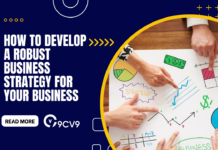
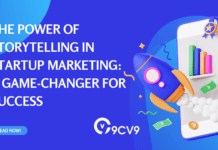





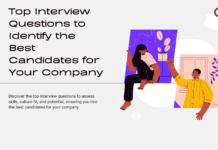
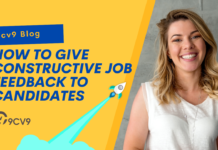

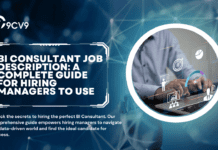





![Writing A Good CV [6 Tips To Improve Your CV] 6 Tips To Improve Your CV](https://blog.9cv9.com/wp-content/uploads/2020/06/2020-06-02-2-100x70.png)


